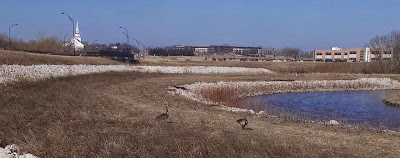Many municipalities in Iowa are now promoting stormwater best management practices (BMPs) to reduce the amount of runoff associated with rain events.
The local ecosystems of prairie, wetlands and forests were very good at infiltrating rainfall, with very little runoff. Deep roots allowed for percolation; soils high in organic matter held on to moisture.
Rain Gardens
Rain Gardens are generally one of the stormwater best management practices encouraged by local governments. These landscape features can integrate many aspects of these native ecosystems which can help with:
- Increasing rainwater that filters into the ground, which recharges local and regional aquifers;
- Preventing flooding and drainage problems;
- Protecting streams and lakes from pollutants carried by stormwater with lawn fertilizers and pesticides, oil and other automotive pollutants, and numerous other harmful substances that wash off roofs and paved areas;
- Enhancing the beauty of yards and neighborhoods;
- Providing habitat for birds, butterflies and many beneficial insects.
These are pictures from a recent Rain Garden installation by Abundant Design.
 |
| Checking the infiltration rate of the soil Rain gardens are sized based on surface area and infiltration |
 |
| Before |
 |
| Marking the layout |
 |
| Downspouts were piped to the garden |
 |
| The machine sped up the rough digging process... |
 |
| ...and the final work done by hand. the laser level was used for the basin floor |
 |
| Almost done |
 |
| After |
Have a great week!


No comments:
Post a Comment